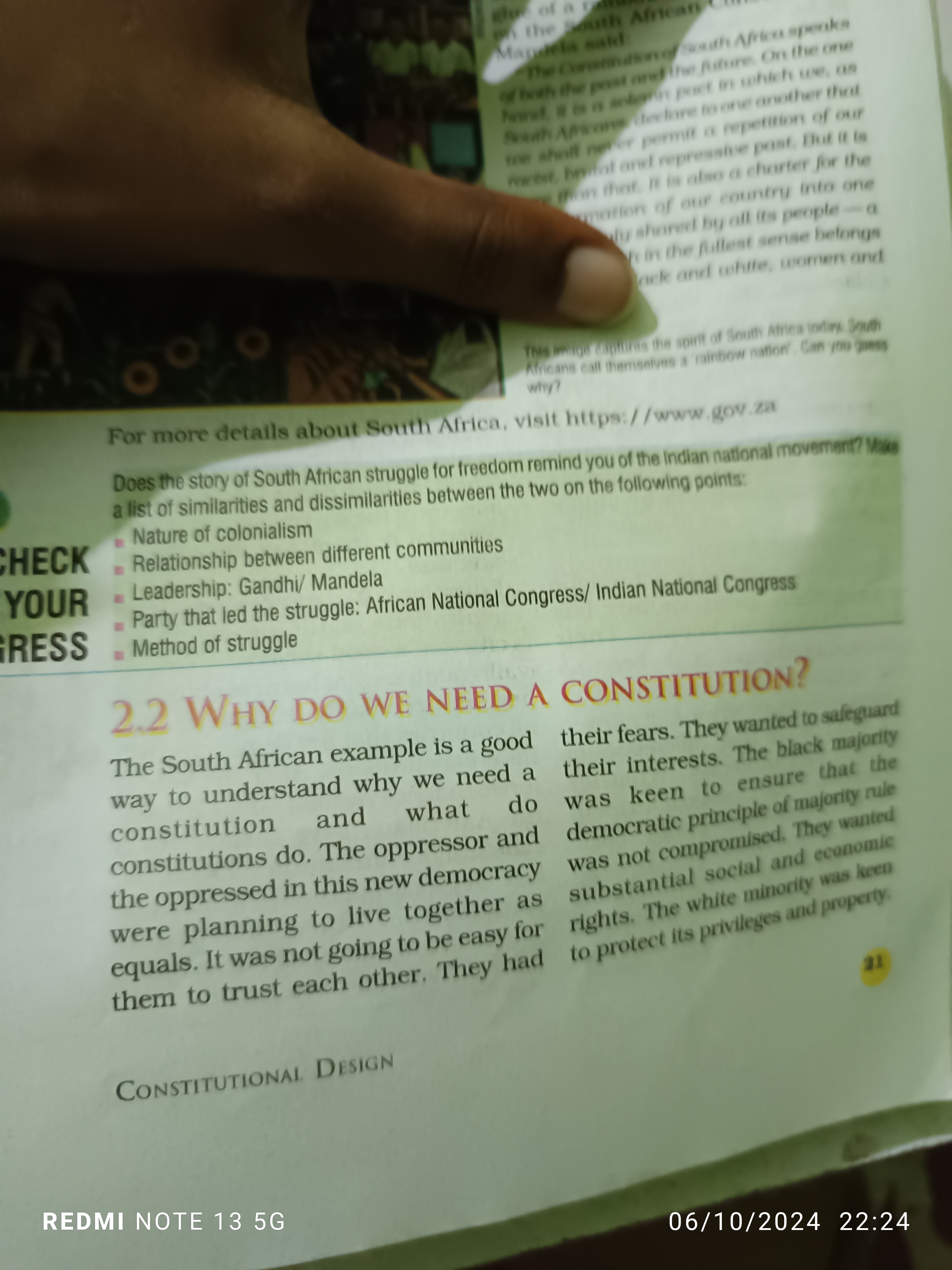Does the story of the South African struggle for freedom remind you of the Indian national movement? Make a list of similarities and dissimilarities between the two on the followin... Does the story of the South African struggle for freedom remind you of the Indian national movement? Make a list of similarities and dissimilarities between the two on the following points: Nature of colonialism, Relationship between different communities, Leadership: Gandhi/Mandela, Party that led the struggle: African National Congress/Indian National Congress, Method of struggle.

Understand the Problem
The question is asking for a comparison of the South African struggle for freedom and the Indian national movement, focusing on similarities and dissimilarities in various aspects such as colonialism, community relationships, leadership, and methods of struggle.
Answer
Both movements faced British colonialism; India had communal tensions, while South Africa had apartheid. Gandhi and Mandela led with non-violence; Mandela initially supported armed struggle. Indian National Congress and African National Congress led their movements, both using non-violent resistance but differing in internal methods.
Similarities and dissimilarities between the South African and Indian movements include:
Nature of Colonialism:
- Similarity: Both faced oppressive British colonial rule.
- Difference: South Africa also faced systematic racial segregation (apartheid), which was not present in India.
Relationship Between Communities:
- Similarity: Both countries dealt with diverse communities and internal conflicts.
- Difference: Apartheid in South Africa legally enforced racial separation, which was more severe than communal tensions in India.
Leadership:
- Similarity: Both Gandhi and Mandela advocated for non-violence and civil disobedience.
- Difference: Gandhi focused more on spiritual and economic self-reliance, whereas Mandela initially supported armed struggle before moving to non-violent methods.
Leading Party:
- Similarity: Both the Indian National Congress and the African National Congress led the movements.
- Difference: The Indian National Congress was more centralized, while the African National Congress faced internal divisions.
Method of Struggle:
- Similarity: Non-violent resistance played a key role in both.
- Difference: The ANC adopted armed resistance as one of its strategies, unlike the consistent non-violent approach in India.
Answer for screen readers
Similarities and dissimilarities between the South African and Indian movements include:
Nature of Colonialism:
- Similarity: Both faced oppressive British colonial rule.
- Difference: South Africa also faced systematic racial segregation (apartheid), which was not present in India.
Relationship Between Communities:
- Similarity: Both countries dealt with diverse communities and internal conflicts.
- Difference: Apartheid in South Africa legally enforced racial separation, which was more severe than communal tensions in India.
Leadership:
- Similarity: Both Gandhi and Mandela advocated for non-violence and civil disobedience.
- Difference: Gandhi focused more on spiritual and economic self-reliance, whereas Mandela initially supported armed struggle before moving to non-violent methods.
Leading Party:
- Similarity: Both the Indian National Congress and the African National Congress led the movements.
- Difference: The Indian National Congress was more centralized, while the African National Congress faced internal divisions.
Method of Struggle:
- Similarity: Non-violent resistance played a key role in both.
- Difference: The ANC adopted armed resistance as one of its strategies, unlike the consistent non-violent approach in India.
More Information
Both struggles inspired other movements globally and emphasized human rights and equality.
Tips
A common mistake is to overlook the specific role racial laws played in South Africa compared to India's more diverse communal challenges.
Sources
AI-generated content may contain errors. Please verify critical information